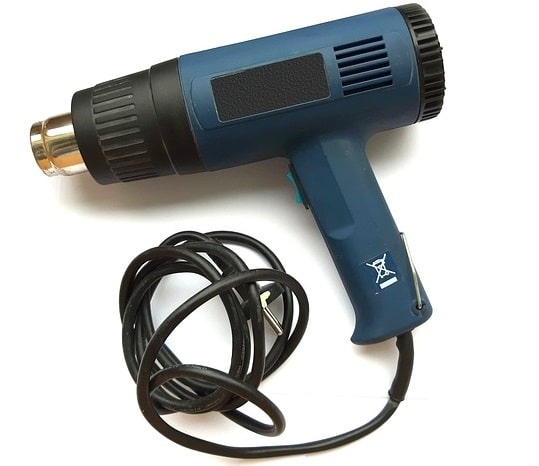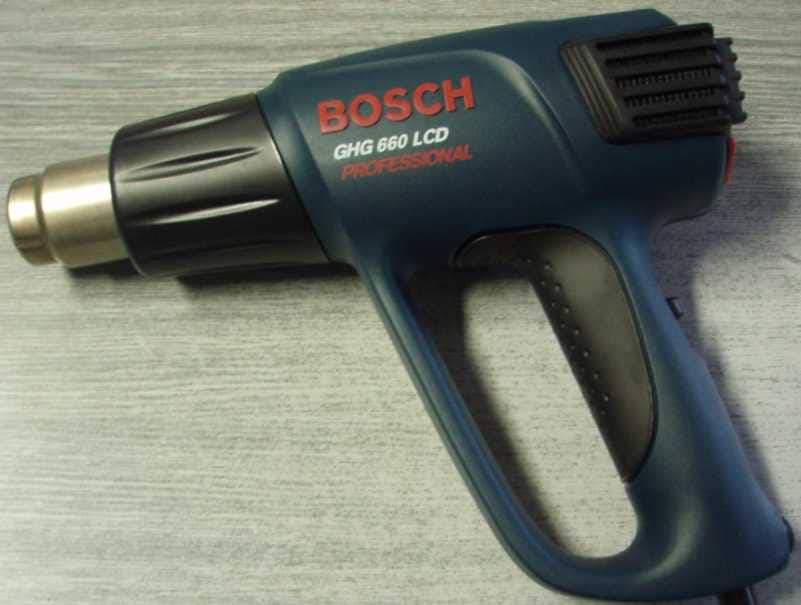
As perhaps the most versatile weapon in the DIYers armory — the number of heat gun uses is astonishing.
Listen up.
Chances are, your workshop is full of highly practical tools, but let’s face it, they’re somewhat restricted in their applications.
Your drywall lift is invaluable for raising wall panels — but it can’t do anything else. Equally, your chainsaw is crucial for felling timber — yet you’re hardly likely to keep it handy in your kitchen cupboard ‘just in case.’
Heat guns are different.
These flexible machines are as suited to DIY and repairs as they are to candle making and surfing — seriously!
Allow me to reveal the multitude of uses for a heat gun.
What Can You Use a Heat Gun For? 20 Amazing Applications

1. Paint Stripping
As far as I can see (and trust me, I’ve looked), there have been no studies conducted on the motivations why people purchase hot air guns.
However, at an educated guess, I suggest that the mother-of-all reasons is your heat gun was originally bought to strip paint. These machines have become so synonymous with this application that they’re often labeled on retail sites purely as paint strippers and not heat guns.
And, perhaps, with good reason.
These hot air units make light work of removing old paint. Whether you’re giving your dresser a new lease of life — or redecorating doors and banisters — heat guns are immense tools.
The best paint removal units soften old paint layers — allowing you to easily remove the coat(s) with a handheld scraper. The beauty of this method is that it’s completely chemical-free. If you’ve never used a heat gun for this type of work before, then check out my handy guide on how to strip paint with a hot air gun.
Unfortunately, many owners of these units consider this is the only application for their heat gun. So, for the majority of the time, it lies idly in their garage — only to emerge once a year.
However, paint stripping is just the tip of the iceberg when it come to heat gun uses.
2. Removing Labels, Stickers, and Decals
Stickers are wonderful things, in that they, well, stick.
Unfortunately, sometimes they’re stuck to objects that you’d rather they weren’t.
For example, give your kids a sticker book, and a few of the glue-backed images will make it onto the correct pages. However, the vast majority will undoubtedly find themselves adhered to your furniture, walls or floor.
Or, if you’re anything like me, you probably have an unhealthy obsession with glass jars. These — once containers of peanut butter or jelly — make wonderful workshop receptacles for screws, nails, and bolts — but I want them labeled with their actual contents — not Mr. Nuts Extra Crunchy.
The problem arises when you try to detach the sticker.
Picking off with your fingernail usually only removes the top layer of paper — leaving behind a plain white backing. Or, if you’re extremely tenacious, you may succeed in taking off the label — but are left with a sticky residue.
Applying heat to the offending sticker or decal softens the glue, making removal straightforward. However, you do need to be a little cautious.
Always think about the surface on which the label has been applied. Too much hot air and you could burn wood surfaces or crack glass jars. Ideally, you need a heat gun with at least a dual temperature feature. This allows you to select a lower temperature setting — sufficient to loosen adhesives without damaging the base material.

3. Roasting Coffee Beans
Nothing beats a cup of freshly brewed Joe — especially when you’ve roasted the coffee beans yourself. Not only does it make for one awesome drink — but it also fills your kitchen with an amazing aroma.
Admittedly, you’re not going to be able to roast on an industrial scale with a heat gun — but for home use, it’s ideal.
The process is straightforward.
Lay out your raw coffee beans on a shallow, heat-resistant pan or tray. With your hot air gun on a medium to high temperature, move it in a circular motion over the beans, holding the tool about one inch away. Every couple of minutes, give the beans a shake or stir them with a long-handled spoon — to ensure they develop an even color.
Once you hear the first crack, it’s time to remove the heat. Alternatively, if you enjoy a dark roast, keep going for a couple more minutes.
A quick pro-tip.
If you have a wife/partner who loves coffee — yet who isn’t as keen on your power tool-buying addiction — this is an easy way to wangle an extra appliance into your home.
Buy her a heat gun for her birthday and explain that it’s for roasting coffee. You get credit for being so considerate — and when she’s not around, you can use it for DIY applications.

4. Thawing Frozen Pipes
Should you reside in a climate where every winter your pipes freeze — a heat gun is indispensable for getting the water flowing again.
The key is to keep the hot air machine moving along the pipe — don’t hold it in the same position for too long. In addition, ensure you don’t heat the pipes where there are any solder joins, and keep away from flammable materials, such as foam insulation or woodwork. To ensure you deliver equal heat distribution — use a heat gun that includes a reflector nozzle, such as the DeWalt D26960K.
It probably goes without saying — but just to cover my own back and avoid any angry emails — only use a heat gun to thaw metal pipes, not plastic. Applying hot temperatures to the latter will undoubtedly melt the ice within — but can also deform or melt the plastic pipe.
5. Removing Wallpaper
This is one of those heat gun applications that few people consider when decorating.
Need to strip paint? Everyone reaches for the hot air gun. But strip wallpaper? Out come the chemicals and the steamer.
This is unfortunate, as a heat gun is excellent at removing wall linings — without having to utilize corrosive fluids or turn your living room into a sauna. Hot air guns act by melting the adhesive paste beneath, allowing you to enjoy that unparalleled satisfaction of pulling off an entire wallpaper sheet.
Use your heat gun on the lowest heat setting, and then gradually increase until the adhesive begins to break down. Use too high a temperature and you’ll set your paper alight. Hence, personally I’d recommend a digital heat gun — which gives you the flexibility of precise temperature control.
6. Removing Floor Vinyl and Linoleum
If you’ve ever tried to lift old floor vinyl before — you know the issues. It either doesn’t want to move at all or it cracks. And — even if you do manage to remove it — you’re left with a mess of adhesive on your base flooring.
A heat gun not only makes linoleum removal effortless by softening the glue, but also enables you to remove the offending sticky residue that would otherwise cause bumps and lumps in your new covering.
The method is similar to that of removing wallpaper — keep the heat gun moving and, again, start on the lowest temperature, gradually increasing it as needed.
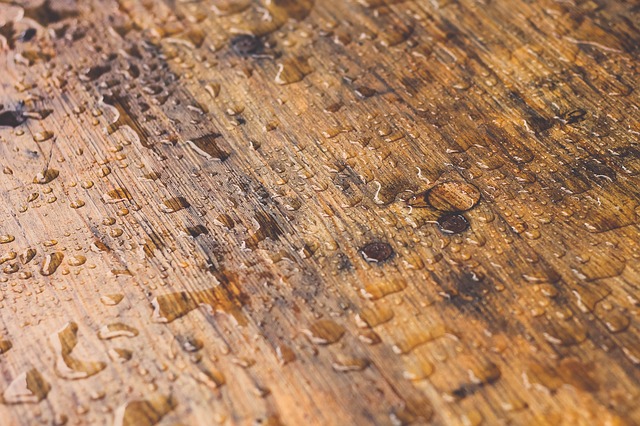
7. Drying Wood
All week, you’ve been planning to paint the deck as soon as the weekend arrives.
But then, there’s a sudden downpour during Friday night, leaving the woodwork sodden — and therefore impractical for painting.
Thankfully, your Saturday morning isn’t going to be wasted in front of the TV. Applying gentle heat with your hot air gun can dry out the timbers — allowing you to crack on with your brush strokes or paint spraying.
When using your heat gun — ensure it’s on a low temperature setting — no higher than 200 degrees Fahrenheit. Don’t be tempted to turn up your machine to eleventy-stupid to get the job completed faster — you’ll probably end up with a pile of charred wood.
8. Melting Wax
Should you accidentally drip wax onto the floor or a desk — simply address it with a short blast of hot air from your heat gun and you can remove it effortlessly.
Furthermore, you can use the power tool as a savvy money-saving measure.
Instead of throwing away candle jars that still have an inch of wax left in the bottom — use your heat gun to gently soften and then remove. When you’ve gathered together a sufficient volume of wax — you can melt it all together with your hot air machine, add a wick, and hey presto — a brand new candle.
9. Faux-Aging of Wood
Who doesn’t want the kudos of antique furniture in their home? Well, personally, I don’t — I find it weird that people pay a ridiculous amount of money for something that’s been used before, looks ugly, and possibly contains woodworm.
However, perhaps thankfully, not everyone is like me.
Giving your wood furniture a once-over with a heat gun darkens the surface — creating an aged appearance. Use the gun on a low-to-mid power setting, go with the grain, and always keep the machine moving, to avoid scorching.
Remember, this only works on bare wood — otherwise, you will just remove the varnish (there you go, a bonus use for a heat gun).
Additionally, check that your soon-to-be-antique furniture is solid wood — not covered in a laminate, which will lift when you apply heat, leaving you with an MDF base beneath.
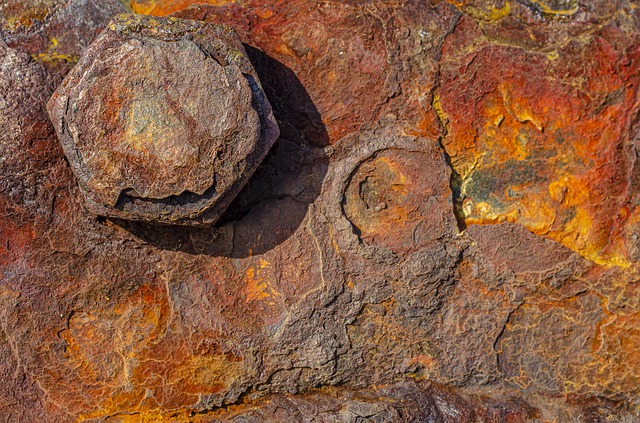
10. Addressing Rusted Bolts and Nuts
In DIY, there’s probably nothing more frustrating than trying to remove a rusted bolt.
Not only does the oxidation process act as a type of natural glue — you’re also cautious not to apply too much pressure with your wrench, out of fear of wrecking the bolt’s head — which would result in you having to drill out the offending hardware.
Hot air guns take away both the effort and fear.
Applying heat breaks down the rust and makes the nut expand — enabling you to remove and replace the bolt.
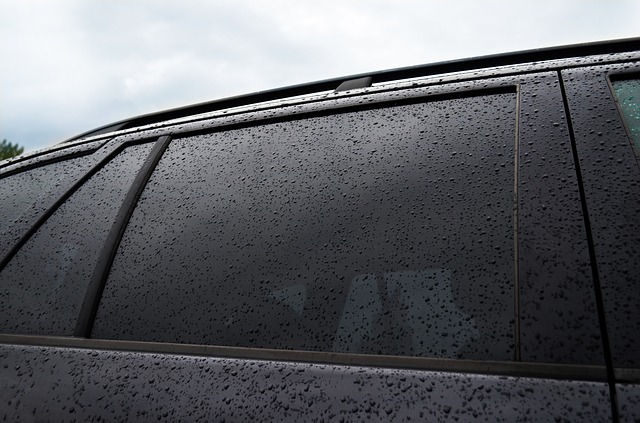
11. Car Wrapping
If you’re fed up with the color of your car — you can change it to something more suited to your personality with a vinyl wrap. It has numerous benefits over a complete respray, in that it:
- Costs less.
- Doesn’t need a primer coat.
- Is faster to complete.
- Can be taken off again (with a heat gun).
- Doesn’t affect resale value (as you can take it off).
Applying car film does require a little patience and skill, unless you want bubbles all over your motor. If this heat gun use appeals to you, I’ve put together a vinyl-wrapping 101 to help you on your way.
12. Upcycle Old Silverware
When I moved into my current house, the previous owner had left behind an old wooden box. Inside was mostly trash, old newspapers, and a few rusted hand tools. But, at the bottom of the chest, was a bundle of silverware cutlery.
To be fair, it was mostly useless — tarnished, bent, and none of it matching — and hence had no practical or resale value. However, my wife, being an arty type, said she would use this silverware to make some novel sculptures.
She never did. The forks and spoons are still there to this day.
However, if you have more get-up-and-go than my better half — a heat gun is a simple way to mold this soft metal.
Warm up the silver with your hot air machine and, with some long-nosed pliers and a vice, you can let your imagination run riot. Produce coat hooks, door handles, jewelry — whatever direction your crafting mind takes you in.
13. Crafting
If the silverware idea has taken your fancy — then there are a multitude of applications for crafting with a heat gun.
Perhaps the most common use in art is for powder embossing. You apply the powder to your paper and card projects, warm it up, after which it adheres and creates a 3-D relief to your handiwork.
Additionally, although not exhaustively, you can use a heat gun for:
- Making soap
- Drying acrylic paint.
- Forming foam.
- Softening clay.
- Decorating cookies.
Ideally, if you are using your heat gun for crafts, it’s best to use a mini heat gun. These tools give you a greater degree of control than the standard size DIY machines — allowing you to deal with precise and intricate artwork.
14. Tinting Windows
If you don’t want to be recognized while in your car — say you’re an international drug dealer or having an affair with your wife’s best friend — window tinting is an excellent way to remain incognito.
However, assuming that neither of the above scenarios reflects your lifestyle, darkening your automotive glass has the benefits of:
Reducing the risk of your car interior fading.
Blocking dangerous UV rays.
Lowering the likelihood of glass shatter in accidents.
Obscuring your valuables from view.
Using an automotive heat gun will provide the most satisfying results — being more likely to create a bubble-free covering and prevent damage to the car’s glass.

15. Shrink Wrapping
Applying shrink wrap with a heat gun is an excellent method of protecting books, food, and mail items. You could use a hairdryer (many people do), but they lack sufficient power and heat concentration to provide a tight seal.
A shrink wrap heat gun isn’t a purpose-built machine — most general-purpose hot air units will cope with this application. Personally, I’d recommend a gun that includes a fantail nozzle, in order to ensure even heat distribution on the wrap.
The only downside of shrink wrapping is that it’s incredibly satisfying and addictive. Meaning everything in your house that doesn’t move is at risk of being covered in film.
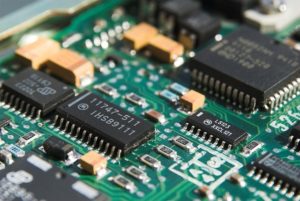
16. Repairing Electrical Items
Most modern-day electrical appliances contain at least one circuit board. The issue is, should any part of their circuitry fail — such as a blown capacitor or burnt out resistor — the machine fails to work.
Heat guns allow you to remove the offending part, and replace it.
At the very least, you need a hot air unit with a concentrator (sometimes called a reducer) nozzle, such as the Wagner HT4500. This enables you to deliver a focused plume of heat — meaning your chosen component is desoldered, not the entire circuit board.
Using a general DIY heat gun for electrical work is fine if you only complete these projects intermittently. However, if you’re a hardcore circuit board repairer, builder, or salvager, you need a job-specific tool.
There are numerous purpose-built electronic heat guns — some forming part of a rework station that also includes a soldering iron. These machines deliver the precise temperatures required for circuit board work, provide a seriously concentrated heat focus, and boast numerous safety features that are crucial for electrical projects.
17. Sport
Perhaps some of the most surprising heat gun applications are for sport.
Hot air machines aren’t just the realm of the DIY enthusiast — if you love winter and summer outdoor activities — you need a heat gun.
They’re most useful for softening wax before you apply it to skis, snowboards, or surfboards. Gently warming this material allows for even and effortless application.
In these circumstances, I’d recommend using a cordless heat gun. This enables you to cover the entire length of your equipment without having to move it, and prevents the cable from becoming covered in wax.
Furthermore, you can use a hot air gun for molding hockey boots, straightening rackets, and warming squash balls.

18. Cooking and Baking
Kitchen heat gun projects are not usually recommended by the manufacturer.
Appliances that come (or may come) into contact with food have to adhere to specific product regulations. And, since hot air guns are primarily for DIY use, they haven’t been designed to meet these requirements.
But hey, there’s nothing like being a rebel. Let’s face it, hairpins aren’t designed for removing wax from your ears, but you’ve done it, right?
Anyway, while I seriously don’t recommend sticking anything in your ear — I suggest using your heat gun in the kitchen is fine. Well, unless your nozzle is dripping paint flakes from your weekend stripping project.
Culinary uses for heat guns include searing meat, melting chocolate, toasting marshmallows, crisping skin, and toasting almonds.
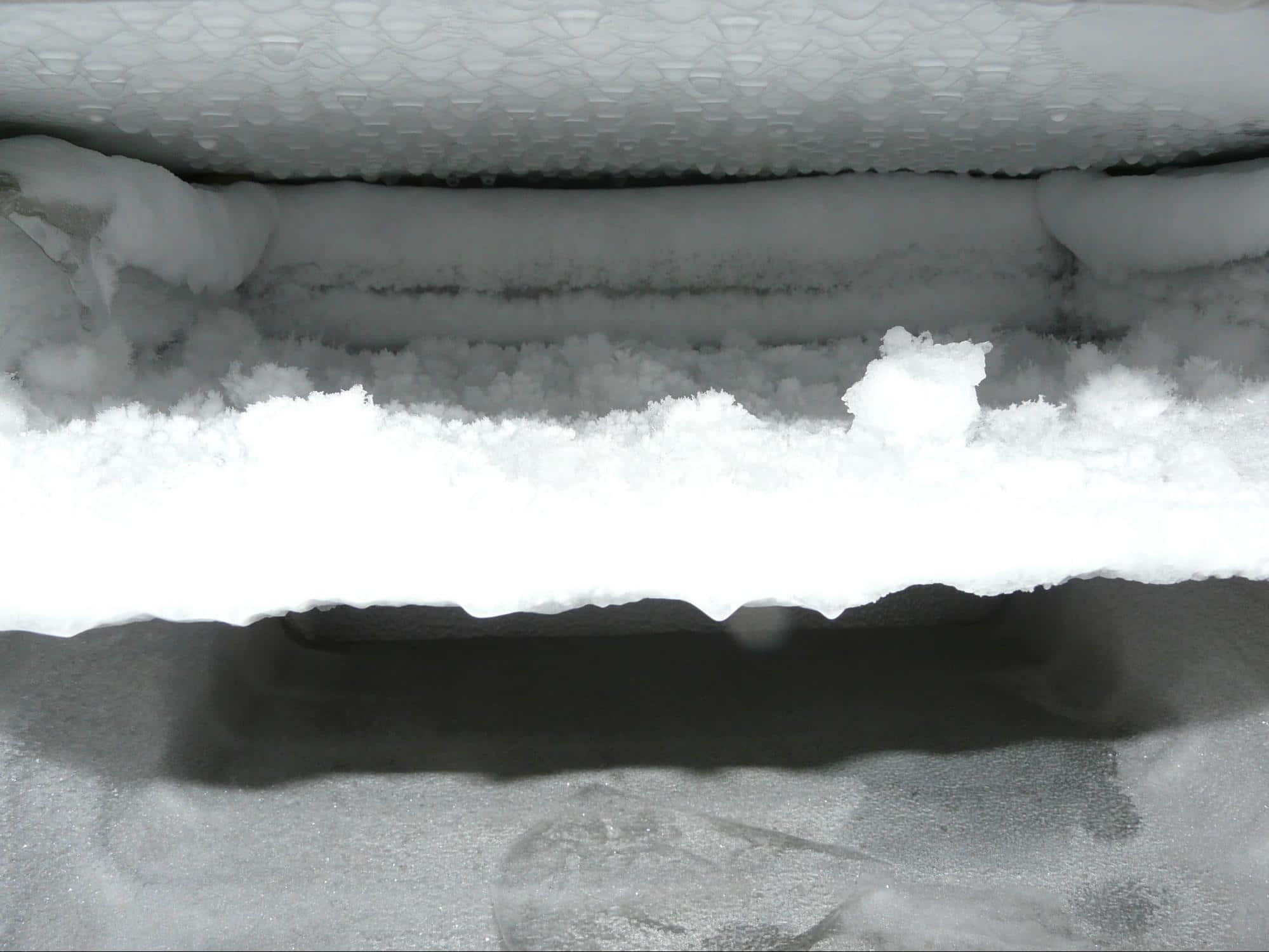
19. Defrosting Freezers
Ice build-up inside your freezer ruins its efficiency and overworks the compressor — which can eventually lead to failure.
So, when you see any excess frozen water — it’s time to defrost.
The issue is, it’s time-consuming — meaning, if you haven’t got a second freezer, your frozen food may thaw, making it inedible.
A heat gun allows you to rapidly melt the ice, enabling you to return your steaks back into the appliance before they degrade. Keep the hot air machine moving over the ice — and never leave it unattended or focused on one position.
Additionally, make sure to use a low heat setting — too high a temperature differential can lead to cracking of the delicate insulation material inside the freezer.
20. Leather Stretching
Have too many cold ones made it a struggle to close your belt?
Warming the leather with a heat gun (on a low setting) will allow you to gently stretch the material — meaning you can wear the same belt again, without having to make an extra eyelet.
Not only does this mean you don’t have to buy a leather punch — but you also have the satisfaction that you’re still using the same belt hole as ten years ago.
However, bear in mind that leather will only stretch so far before it breaks — so if you’ve seriously put on the poundage — you need to buy a new belt.
Heat guns are wonderful tools, but they’re not miracle workers.
Conclusion
Basically, anything that requires a focused concentration of heat.
But sadly, the heat gun is often neglected.
Like your Auntie Mavis, who you hardly ever think about and contact once a year with a cheap birthday card — it sits lonely and unappreciated in your garage, only appearing when you want some paint stripping (the heat gun that is, not your Auntie Mavis).
But this tool deserves to be used — and often.
It’s a label remover, bean roaster, car wrapper, electronic repairer, and surfboard waxer. Furthermore, it functions as a breadcrumb toaster, pipe thawer, window tinter, and shrink wrapper.
This article barely touches the surface of this immense power tool’s complete applications — allow your imagination to run riot and discover your own unique heat gun uses.
